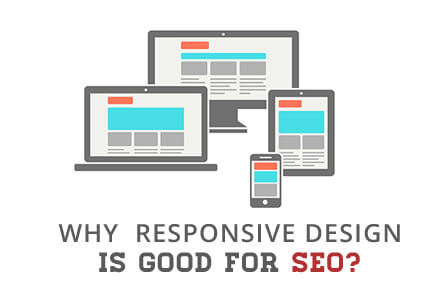
What is Responsive Web Design? The term “Responsive Web Design” was coined by Ethan Marcotte in May 2010. The term was created to describe a method of web designing that is aimed at creating an optimal viewing experience on a website. Reduced scrolling, easy of use across a wide variety of devices, automatic resizing and minimal panning are just a few of the usability features that a Responsive Web Design would include.
Many sources recommend that a Responsive Web Design is a low cost alternative for mobile apps. But Responsive Web Designs are still relatively new and there are many webmaster’s who are still beginners when it comes to designing with it.
Google Engineer, Matt Cutts, summed it up succinctly when he said “Responsive design just means that the page works totally fine whether you access for site URL with a desktop browser or whether you access that URL with a mobile browser. Things will rescale, the page size will be taken into account.
In Forbes’ article ‘Why You Need To Prioritize Responsive Design Now’, the importance of moving beyond a mobile version of the website was stressed. The article covered an interview with the President of Trighton Interactive, Jody Resnick, who said that “Responsive websites simplify internet marketing and SEO. Instead of having to develop and manage content for multiple websites, businesses with responsive sites can take a unified approach to content management because they have only the one responsive site to manage.”
But that almost sounds too good to be true. Can your SEO really be benefitted by a responsive website? The answer is yes. Here are some specific examples of how a responsive design can help your website’s SEO.
All your design and SEO effort can be focused into a single site
This reduces the duplication of your effort and avoids the situation where updates have been made on one site but are delayed or forgotten on the other site.
Creating a meaningful user experience
By eliminating different sites for different devices, the analytics will become more meaningful since all the users will be visiting a single site. Indeed, this is one that Matt Cutts agrees with. He said that a Responsive Web Design site will not lose its SEO benefits, as the URL is the same. He said “So in theory, if you do a mobile version of the site, if you don’t handle that well and you don’t do the rel=canonical and all those sorts of things, then you might, in theory, divide the PageRank between those two pages. But if you have Responsive Design then everything is handled from one URL, so the PageRank doesn’t get divided, everything works fine”.
Keeping it simple
With a responsive web design, search engines would only need to crawl and index a single site. This is one of the best ways to improve your search results because it would reduce the amount of work that a search engine would need to do to index your site.
Google recommends it
Google is not only interested in a good search engine algorithm, but in a positive user experience as well. Way back in June, 2012, Google’s Webmaster Central Blog spoke of how Google’s recommended configuration is a responsive web design that uses just CSS to change the way in which the page is rendered on a device. By having a responsive website, Google is able to more easily discover your content and it reduces the time spent crawling your site for meaningful reasons to display your site to users. Once the expertise has been established, you will gain a better Page Rank, but it all begins with making it easy for search engines to crawl your site.
Custom Software Lab understands that a Responsive Web Design is crucial to your marketability in the online world of business. We can create you a fully customized website that will increase traffic to your website and create positive reviews from those who find it extremely easy to use. Contact us today to get started.
